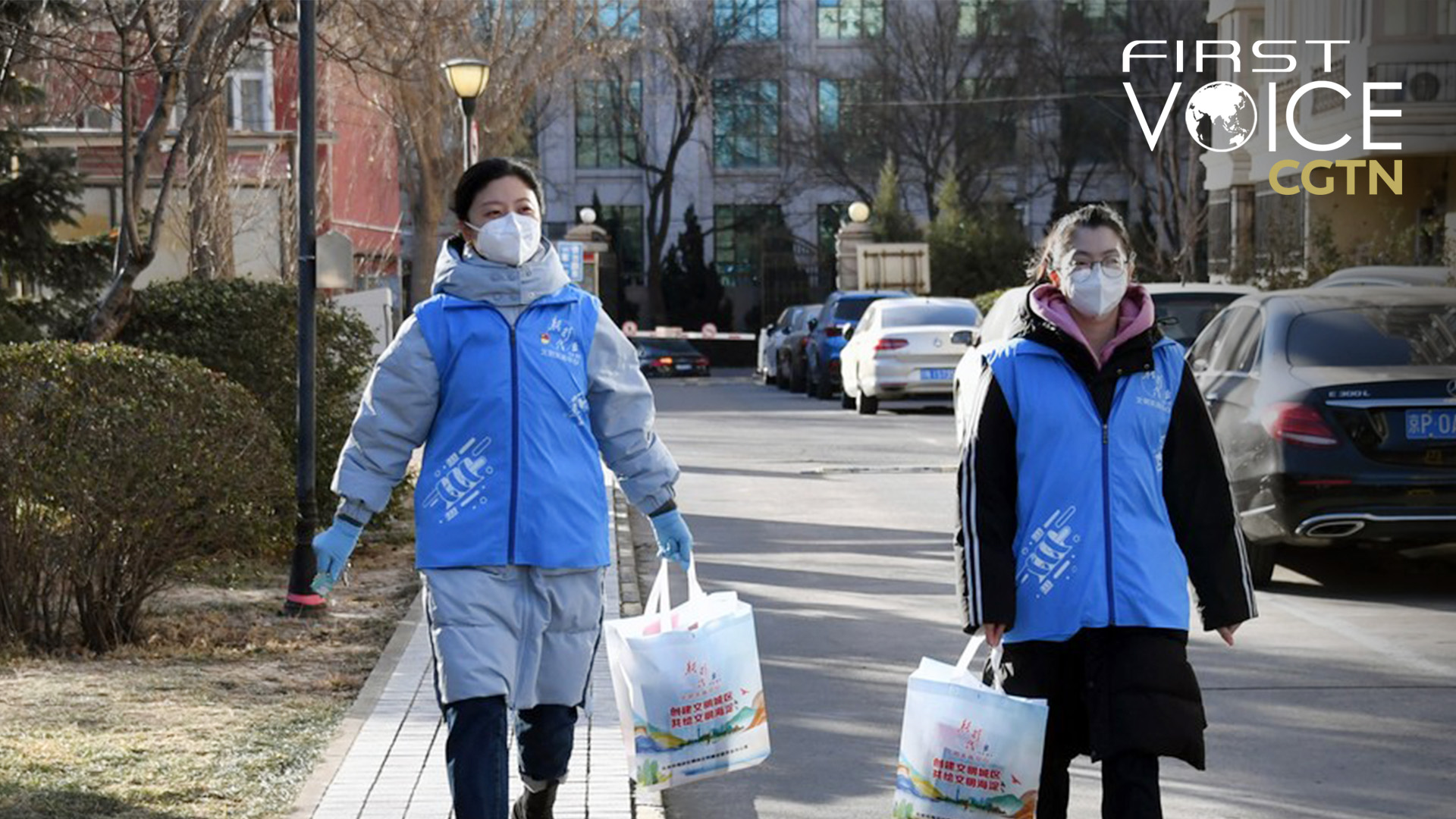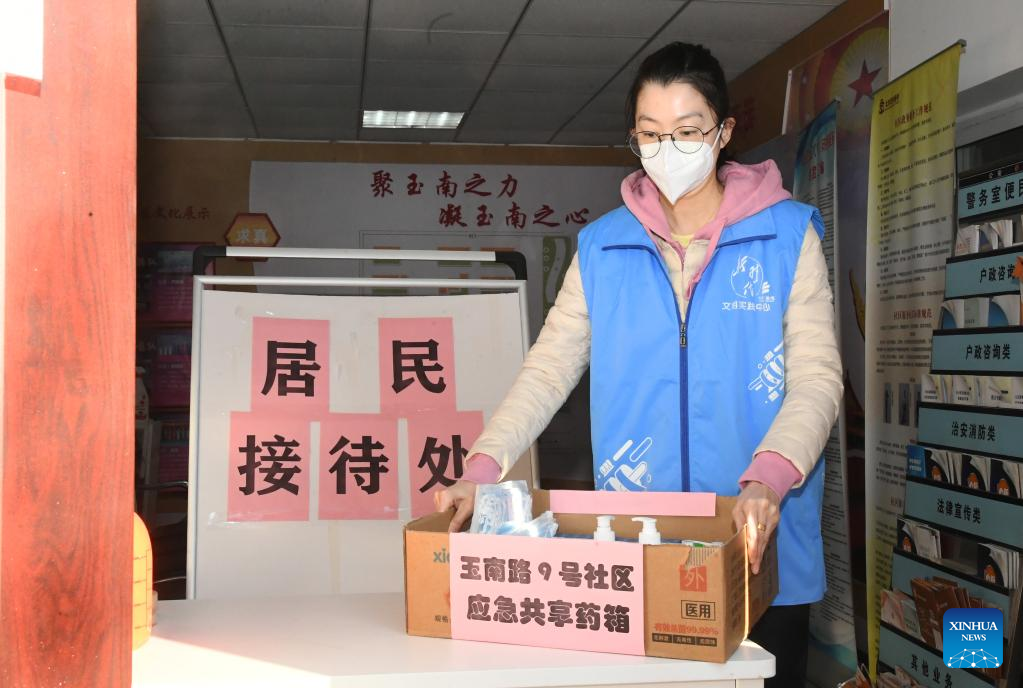
Editor's note: CGTN's First Voice provides instant commentary on breaking stories. The column clarifies emerging issues and better defines the news agenda, offering a Chinese perspective on the latest global events.
In an interview with the POLITICO, Huang Yanzhong, a senior fellow for global health at the Council on Foreign Relations, described China's relaxation of COVID-19 control and prevention measures as having "no preparation" and "no roadmap." The argument is that China could've adopted more measures prior to prepare for the "reopening," and that the approval but lack of import of Paxlovid "may have something to do with national pride."
Other similar arguments have surfaced since China announced major COVID-19 policy shifts in December. But preparedness can only be evaluated by the results to which it leads – in the case of COVID-19, the number of lives saved. "Is China prepared?" isn't the question here. The question is: How long has China been preparing?
In a recent interview, the former director of economic and business policy for the mayor of London John Ross said that if you apply the American-style COVID-19 policy in China, it'd could've led to 4.7 million COVID-19 deaths in China. He asked the question: Can you imagine 4.7 million Chinese people dying because of the pandemic?
Since the outbreak, China has been preparing the Chinese to deal with the virus. The dynamic zero-COVID-19 policy was put into place to buy time for the deadly original strain and the subsequent variants to become less deadly. Li Guangxi, expert of the State Council’s Joint Prevention & Control Mechanism said in an interview that "once the virus come to the world, it was very severe. It will make hospital, especially for the ICU beds, occupied. It happened in every area of the world."
"And now, once the virus become much much less severe and mild, at this time, we want to ease our measures. We will certainly have some surge of the cases. However, the mortality rate and the severe type of COVID-19 will become much less than before," Li said.

People enjoy leisure time at a business center in Beijing, capital of China, December 24, 2022. /Xinhua
People enjoy leisure time at a business center in Beijing, capital of China, December 24, 2022. /Xinhua
In the meantime, China developed COVID-19 vaccines and launched a massive campaign to get the country vaccinated. Accordingly, more than 3.46 billion COVID-19 vaccine doses had been administered on the Chinese mainland. Over 90 percent of the population are fully vaccinated.
These measures have laid the foundation. And, the virus has changed. According to Wu Zunyou, the chief epidemiologist of the Chinese Center for Disease Control and Prevention, proportion of severe and critically ill cases have fallen from 16.47 percent in 2020 to 0.18 percent in recent times.
"We are not unprepared," according to Peng Zhiyong's interview with the Global Times. Peng is the director of the intensive care unit of Zhongnan Hospital of Wuhan University in Wuhan and had fought the early COVID-19 outbreak in 2020. He said that over the years, there has been an enhancement of the construction of designated hospitals for treating COVID-19 patients and improvements among medical workers in the ICUs.
The National Health Commission's medical administration department's director Jiao Yahui said in a press conference in December that China's COVID-19 makeshift hospitals will be retrofitted and equipped with more treatment capacities to become sub-designated hospitals for COVID-19 patients. China has about 138,100 critical care beds, 10 per 100,000 people. There's a total of 80,500 critical care specialists and 220,000 intensive care nurses in China, and over 106,000 doctors and 178,000 nurses are capable of handling ICU works.

A staff member puts a shared medical kit at the entrance of a residential community in Yangfangdian Subdistrict of Haidian District in Beijing, capital of China, December 27, 2022. /Xinhua
A staff member puts a shared medical kit at the entrance of a residential community in Yangfangdian Subdistrict of Haidian District in Beijing, capital of China, December 27, 2022. /Xinhua
Also, to protect the vulnerable population, including the elderly, which is a critical challenge for China, China has launched the second COVID-19 booster shot on December 14. The inhalable vaccine was also rolled out for those who are weary or unable to get a jab in the arm.
Supplies of anti-epidemic medicine were ramped up. Beijing's drug administration and authorities have sent joint working groups of more than 50 people to five large pharmaceutical wholesale enterprises in Beijing to alleviate the shortage of epidemic prevention drugs. Data from the China Resources Pharmaceutical Commercial Group Co., Ltd showed that the company had supplied more than 3.5 million boxes of anti-epidemic drugs to over 4,000 clients in Beijing in a week – that included 300 hospitals, more than 2,200 community health centers and over 1,500 retail pharmacies.
In Shanghai, fever clinics in 145 secondary and higher-level hospitals were asked to remain fully open. In Zhejiang Province, internet hospitals have opened up in some cities to respond to the surging demand for diagnosis and treatment in fever clinics.
No country could be "fully prepared" for a pandemic like the COVID-19. Prevention and control are a process of establishing institutions and boosting medical capabilities to deal with the evolving situations. Along with the policy change, China has rapidly adapted to the current situation and making adjustments based on feedback from the public and medical community. Therefore, China stands prepared to handle whatever comes next.
(If you want to contribute and have specific expertise, please contact us at opinions@cgtn.com. Follow @thouse_opinions on Twitter to discover the latest commentaries in the CGTN Opinion Section.)